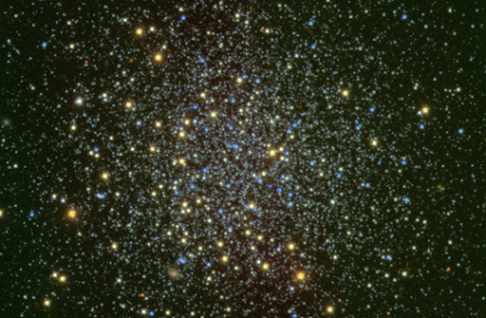Have you ever stared up at the night sky, awash with millions of twinkling stars, and wondered about their origins? Globular clusters, like NGC 5466, hold vital clues to our galaxy's history and the grand story of stellar evolution. Today, we embark on a journey to explore this enigmatic cluster, located a staggering 51,800 light-years away in the constellation Boötes.
A Relic of the Ancient Past
NGC 5466 is estimated to be a staggering 13 billion years old, placing its birth around the same time as our Milky Way galaxy. This ancient cluster is a treasure trove for astronomers, offering a glimpse into the universe's early days. By studying its stars, we can unravel the mysteries of stellar formation and evolution that unfolded billions of years ago.
A Sizeable Stellar City
While the exact dimensions are elusive, NGC 5466 is believed to be a large globular cluster, teeming with hundreds of thousands, possibly millions, of stars. Imagine a city where every resident is a star! The collective gravity of these stars binds them together in a mesmerizing dance, creating a dazzling spectacle. The total mass of the cluster is estimated to be millions of times that of our Sun, making it a true giant in the cosmic metropolis.
A Star Formation Mystery
Unlike most globular clusters, which are thought to have formed all their stars in a single burst, NGC 5466 might have a more intriguing story. Recent research suggests it may have undergone multiple star formation episodes. This challenges our traditional understanding of globular cluster formation and opens up exciting new avenues for investigation.
A Population of Puzzling Stars
NGC 5466 throws another curveball at astronomers. Globular clusters are typically known for their metal-poor stars. However, NGC 5466 is home to a population of blue horizontal branch stars, which are hotter and younger than expected for this type of cluster. This anomaly hints at a complex evolutionary history that scientists are actively unraveling.
A Stellar Zoo
The cluster is a haven for a diverse stellar population. Predominantly, it houses old, low-mass stars like red giants and white dwarfs. Some neutron stars, the collapsed cores of massive stars, might also lurk within the cluster. While specific individual stars haven't been named yet, astronomers are meticulously studying the cluster to create a detailed census of its stellar inhabitants.
A Collisional Course?
While there's no evidence of past collisions, globular clusters aren't immune to the Milky Way's gravitational influence. This pull can stretch and distort them over time. It's possible that NGC 5466 has experienced tidal encounters in the past, but more observations are needed to confirm this.
A Window to the Past
The story of NGC 5466 is intricately linked to the formation of the Milky Way itself. By studying the cluster's stellar makeup and its evolution, we can gain valuable insights into the processes that shaped our galaxy's stellar population. It's a window into the past, offering a glimpse into the grand narrative of galactic evolution.
A Glimpse Through the Hubble
To truly appreciate the splendor of NGC 5466, search online for "NGC 5466 Hubble image." The Hubble Space Telescope captures the cluster in all its glory, showcasing a mesmerizing concentration of stars. Each point of light represents a sun, a potential world, and a story waiting to be unraveled.
NGC 5466 is a testament to the universe's vastness and the wonders that lie beyond our solar system. As we continue to explore this enigmatic cluster, we unlock secrets about stellar evolution, galactic history, and the very building blocks of our universe. The journey to unravel the mysteries of NGC 5466 has just begun, and the discoveries waiting to be made promise to reshape our understanding of the cosmos.



Comments
Post a Comment